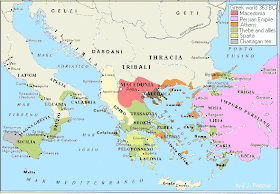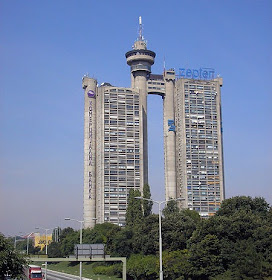Skopje, like so many other large cities in the Balkans, has a large fortress that dominates the high point of the city. The first iteration was built during the 6th century, and later versions were built during the 10th and 11th centuries. It was partially destroyed by the 1963 earthquake and only recently restored, which accounts for the pristine appearance of the crenelations at the top of the wall.
We walked up to it from Macedonia Square in the evening, but it was closed. Too many attractions in Macedonia are not keeping Tourist Hours, something that needs to change as tourism increases. We did enjoy a walk around about half of the perimeter.
We walked up to it from Macedonia Square in the evening, but it was closed. Too many attractions in Macedonia are not keeping Tourist Hours, something that needs to change as tourism increases. We did enjoy a walk around about half of the perimeter.
 |
| The Millennium Cross in the background. |



























